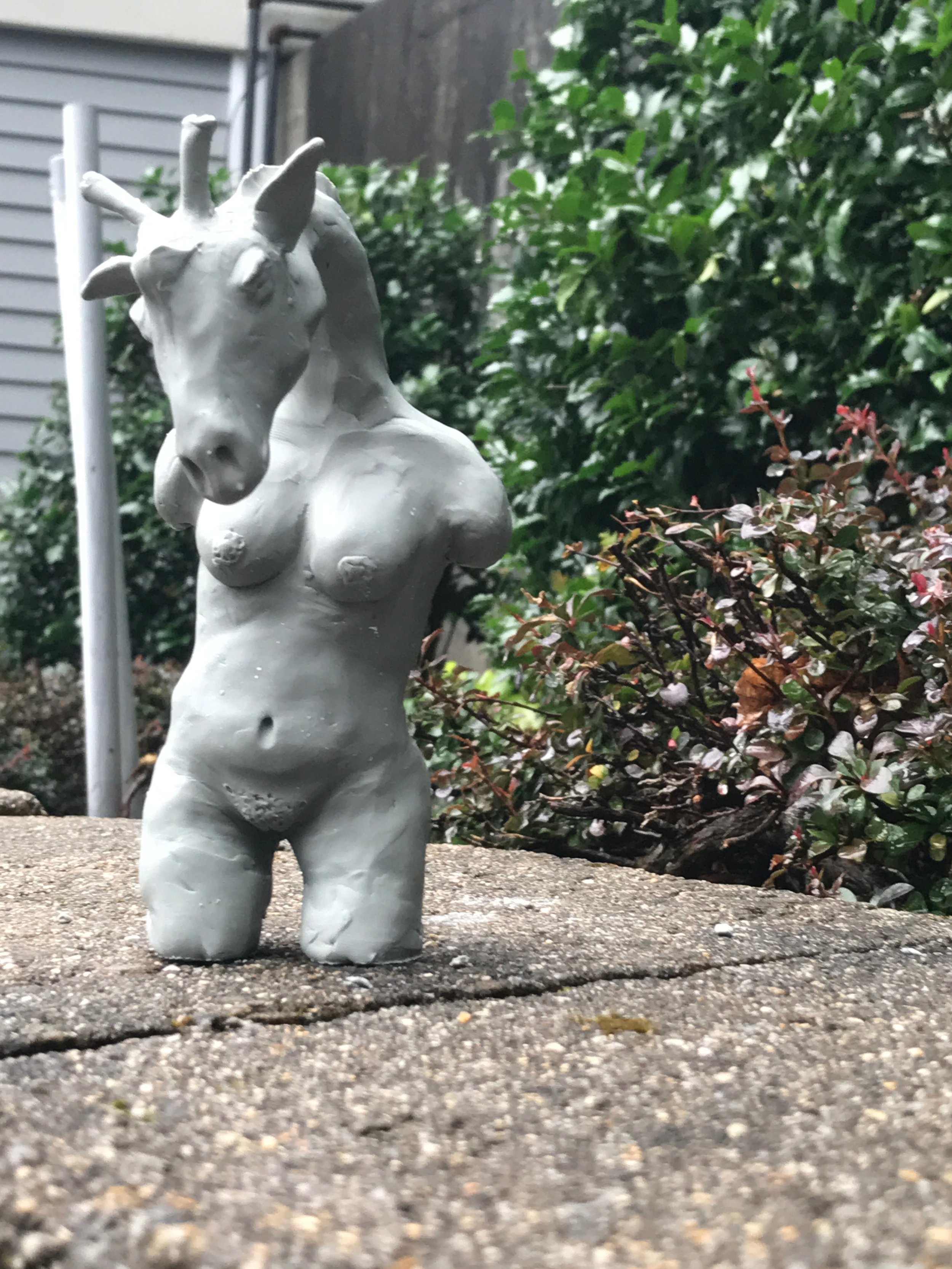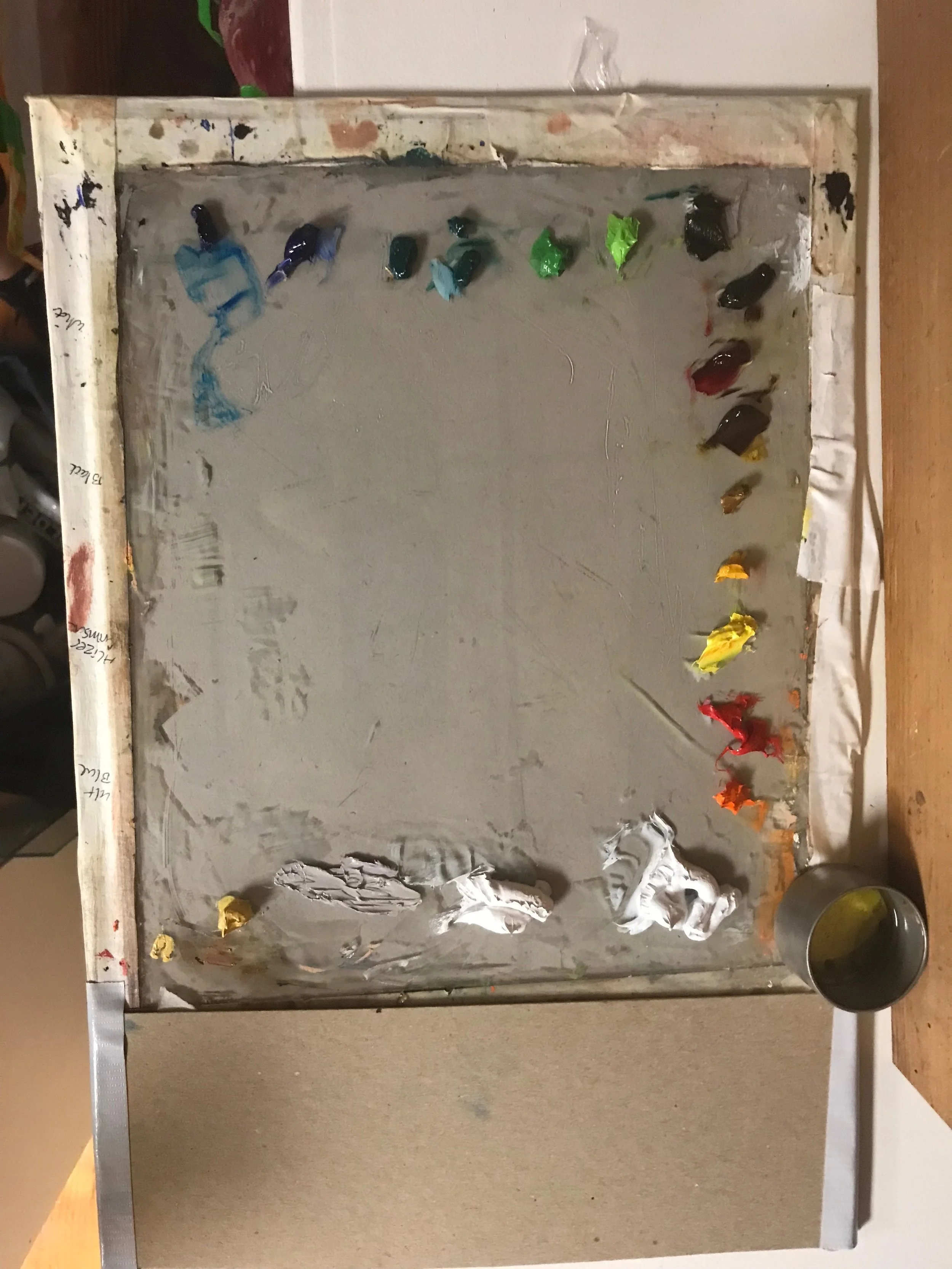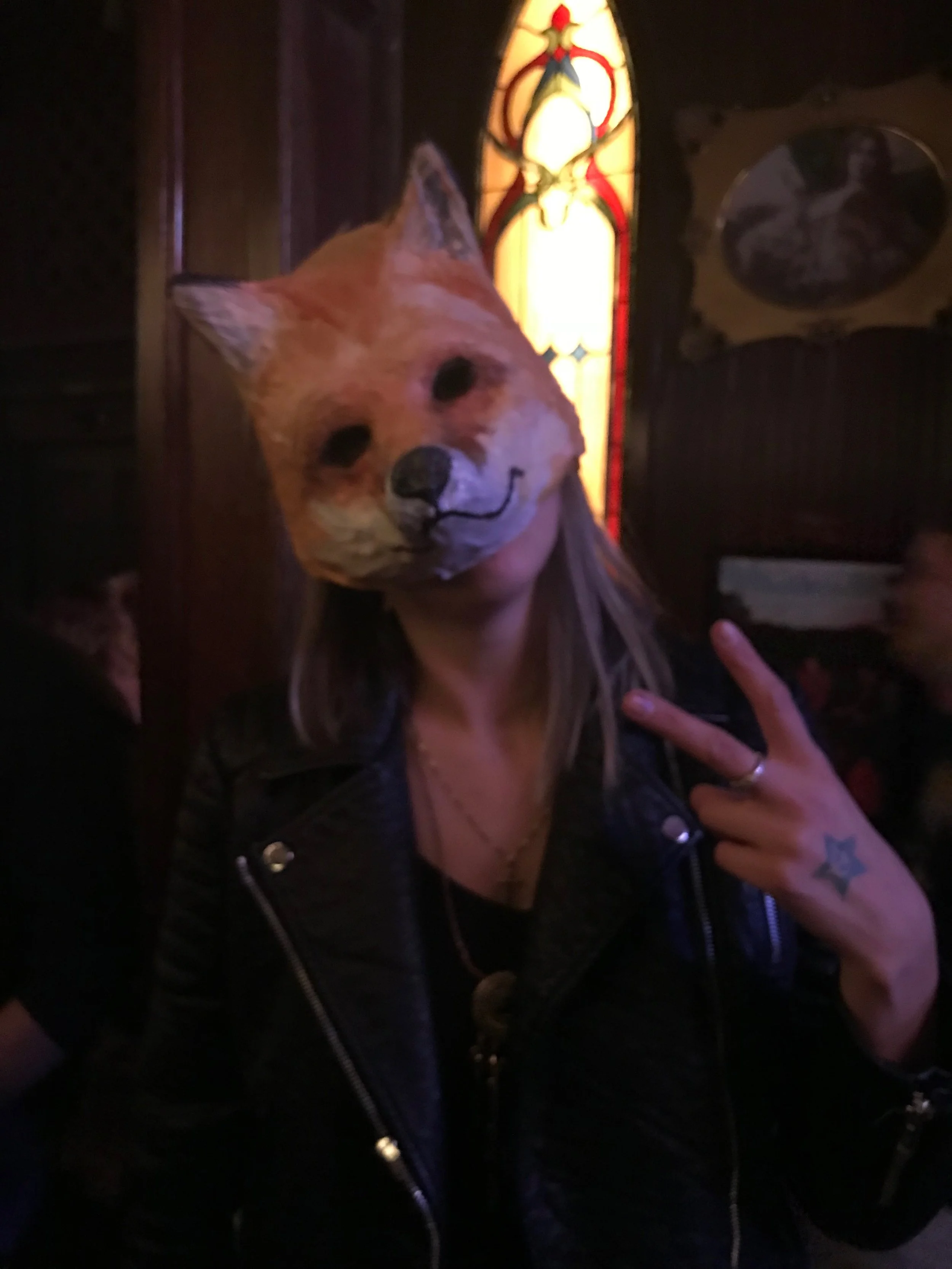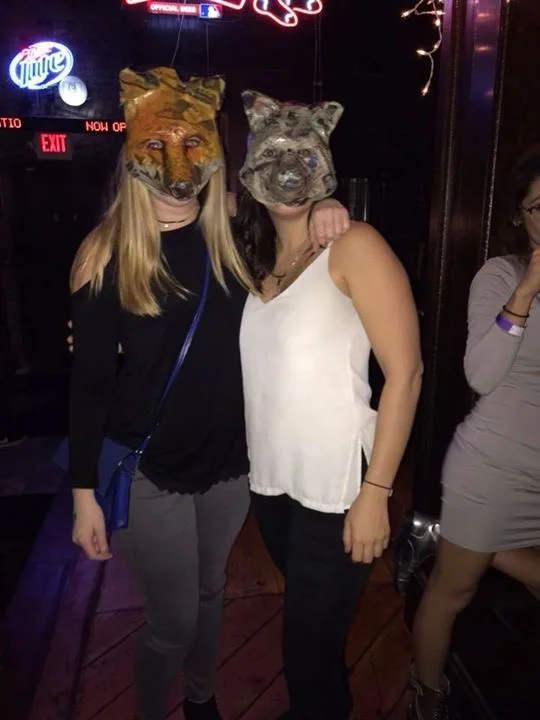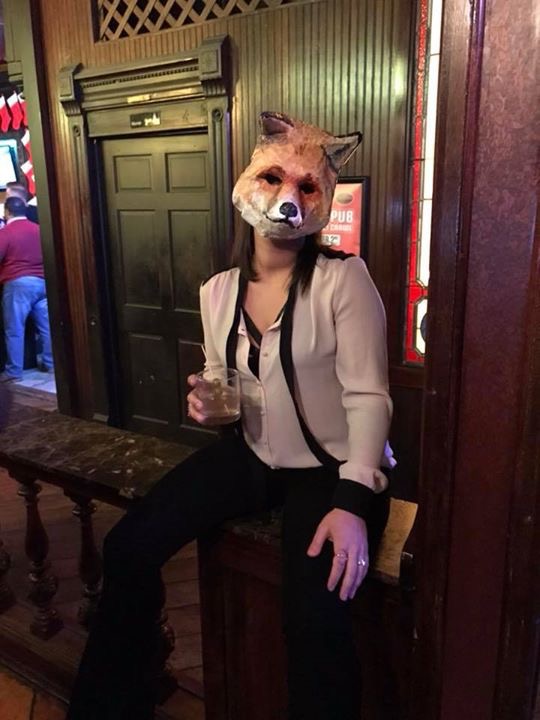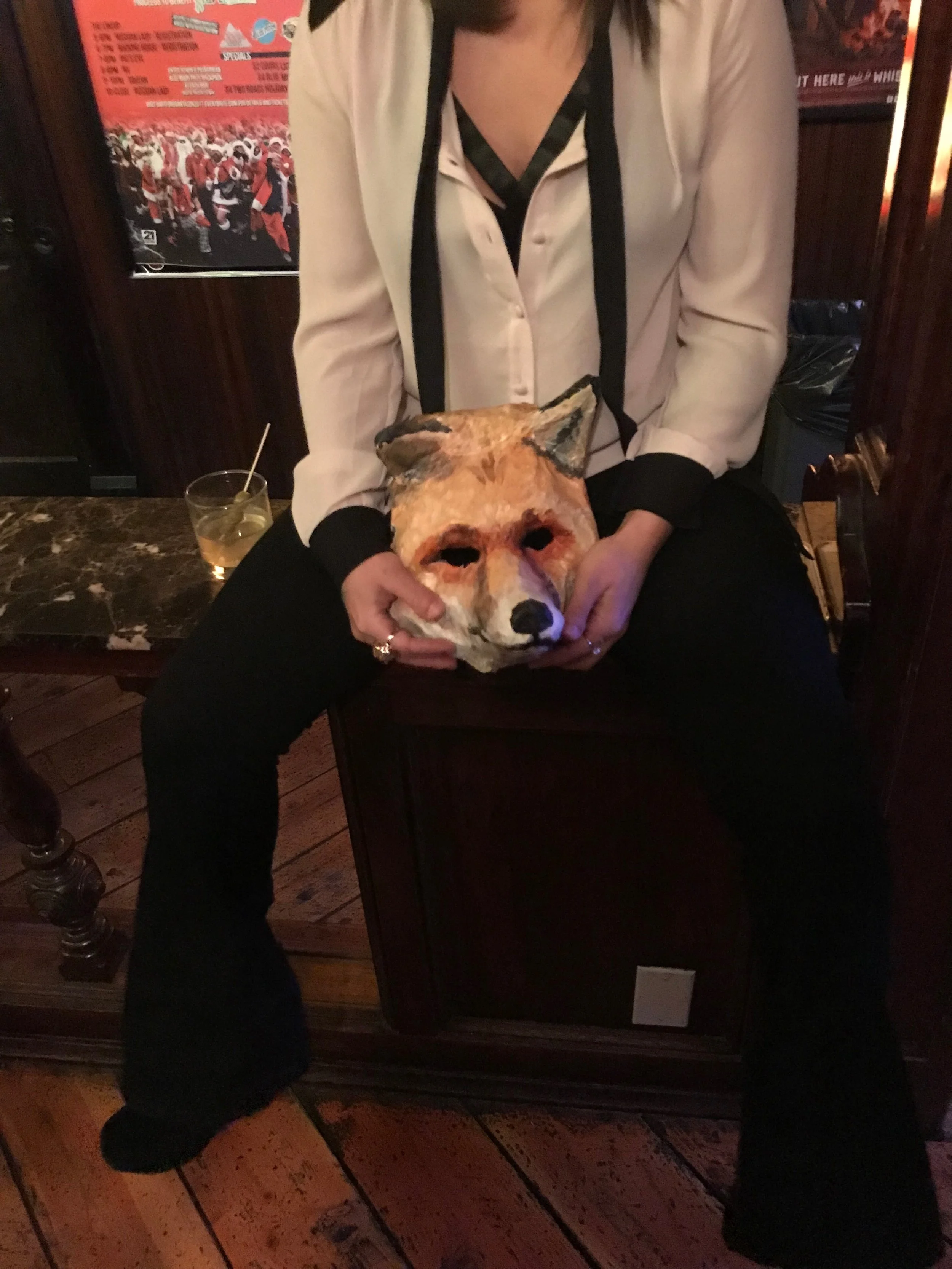Moving from Sculpture to Mask-making:
The sculptures I created under the influence of Beth Carter's "Standing Minotaur" were the beginning of what has become a very involved and very holistic search for information on the relationship between fantasy and the authentic self.
As mentioned in my "Septober Update!" these sculptures started to feel forced. I lost the drive I'd had and felt like what I was doing was not as authentic a representation of what I could be getting at--that these two different beings would exist separately rather than as one perfectly sewn creature. I wanted the figure to have a human head somehow while still representing some other, animalistic nature. I thought of the mask as a way people hide their self or their humanity/weakness.
I researched masks and came across an image of Gillian Wearing. She looked young. She was wearing a mask of her own face at the age seventeen; it was so realistic that at first I'd questioned how this was relevant to my mask search. It wasn't until I noticed the very slight shift of skin and light around the eyes that I realized the image was of a mask.
Self Portrait at Seventeen, Gillian Wearing, http://www.anothermag.com/art-photography/7906/the-many-selves-of-gillian-wearing
After reading about Wearing's history with masks and interest in the separation of the self and the appearance, I became engaged with the idea of investigating this disparity. In a paper I wrote on Gillian Wearing (here), I found that this disparity most likely comes from fear of judgement and accountability. In the mask, people are able to see others more fully without being recognized as their true self. This grants those masked figures the power to judge and bear witness without exposing themselves. This also means that emotional reactions--facial expressions/tears--are cloaked to hide any semblance of human weakness. Lastly, the anonymity of the mask makes it possible for the masked figure to express in words his or her experience without being accountable in a concrete/recognizable way. Freedom of judgement and freedom from accountability grants these people a safe and seemingly off-record space to voice their truths and be their authentic selves.
While in this mental space, contemplating the safety in anonymity and consequence-less expression, I watched all of HBO's "Westworld".
Westworld, HBO, https://www.hbo.com/westworld
Westworld is a series remake of Westworld (1973), a film in which two men visit an adult theme park where robotic human facsimiles exist only to entertain their human tourists. Using tropes of the Wild West, Westworld becomes a place for people to complete their basest fantasies: rape, steal, shoot, kill, etc. Within the series Westworld, the robotic hosts seem more human and empathetic than the human visitors. The visitors start to play roles as the robots learn improvisation. This juxtaposition leads viewers to ask who is more human: robot or man?
This series continues a similar thread to that of Wearing: fantasy grants people the space to be their full range of self. It also suggests that when people have no mask or cover, they use the human form as their mask by adjusting their appearance to what is appropriate for their societal role.
While the humans face this degradation of character the robots start to become more human. According to the scientists in the series, this "humanness" is due to their ability to improvise, which comes from many iterations of the same experience. Each robotic host is given a narrative which plays on a loop for visitors to encounter. Each time the host plays out a narrative, he or she might deliver a similar line or complete a similar action that has no heavy influence on the result of the narrative. The programs controlling the host create registers of responses in each given situation chosen by the host's program in future iterations. This is similar to human conditioning in social interactions. What makes this improvisation more human is when hosts start to remember the past iterations. The memory of the loss of other hosts due to shootings or the trauma of rape cause a very human reaction: a feeling of pain, a want of revenge. The memory matched with the register of reactions possible within the host grant the host a larger, more autonomous capacity to improvise and express the pain and joy associated with the stored memory of experience.
While the human visitors' experience in Westworld is an expected trope similar to that of "What happens in Vegas stays in Vegas...", the robotic hosts' transformation into autonomous beings is an interesting and engaging response to the question: What makes us human? After completing the first two seasons (and patiently awaiting the third in 2018), I expect that memory and the simultaneous conditioning and spontaneity of iteration is what makes us human. Though some missing pieces such as the limbic system simplify the answer to this question, I wouldn't be surprised if memory and iteration had some effect on how people learn to feel and emote. The existence of emotional response alone would not necessarily teach a person to express that feeling/internal response. Memory and iteration might condition that reaction and configure it to match the emotional/social culture surrounding the subject. INTERESTING! I'm not sure HOW I'm going to use this thread of thought to inform next movements other than to use iteration to inform the work and to use fantasy as a springboard for "realness".
Mask-making and Painting
After realizing that I wanted my end product to manifest as a painting (see Septober Update!), I started to take oil painting classes with Susan Wakeen. We meet every Wednesday and I complete homework to "catch me up" to the other practicing artists (the others have been practicing with Susan for years).
In addition to the painting class, I've completed 10 papier mache casts of a fox sculpture created in plastilina. The fox image originated from a set of questions I'd sent out on facebook to people: how do you protect yourself, what environment are you most comfortable in, how old do you believe you are, and what animal you would be if not human? The first responder, said "a fox". I completed the sculpture using stock photographs on the internet (simple google image search). Here are some images of that process:
I painted each mask differently using acrylic paint, flexible modeling paste, and gloss gel medium. My goal was to diversify each iteration while still representing the basic subject.
To take the masks a step further I wanted them to be worn. I invited a bunch of women out to a bar in Hartford to drink, dance, and wear masks. I had the bar approve the masks so that I might take reference photos and videos throughout the night. Here are some resulting photos:
Continuing on, I don't want to stop at the bar scene images. I want to gather more images to choose from--images of women running, working, drinking coffee, painting, sleeping, etc. in masks so that I have a better sense of what it is I want from this. Something my mentor is very dedicated to is allowing the product to inform the direction of the work rather than forcing the product into an unnatural direction. By allowing the masks to exist in multiple scenarios, I will have a greater sense of my next move.
Ultimately, I want to paint these in oil paint. I might try acrylic sketches for planning as I'm familiar and have access to free materials. What I want for this painting is something reminiscent of a foggy memory. After flipping through ArtForum, Frieze, American Art Review, and others, I found paintings by Nicolas Martin.
To see some of his work, please go to theartofnicolasmartin.com.
What I like about his work is the fuzziness of it, like that of a fading memory. I want to portray these images in a way that matches the ambiguity of the self and blends the "appearance" with the "self" or the mask with the person without ever truly defining them as such/rendering them completely.
To be continued.
